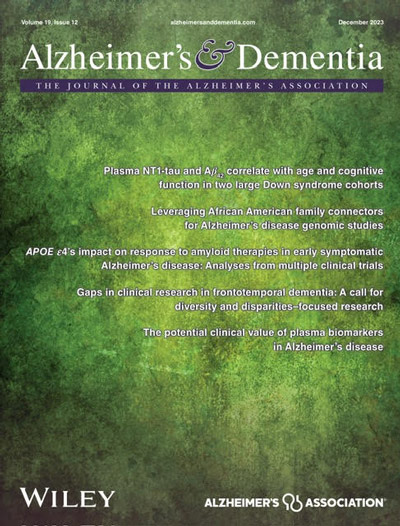Sociodemographic traits as early indicators of AD, FTD, and VaD up to 10 years before diagnosis
Abstract
INTRODUCTION
We aimed to investigate early differences in sociodemographic factors before the onset of Alzheimer's disease (AD), frontotemporal dementia (FTD), vascular dementia (VaD), and mixed dementia (AD + VaD).
METHODS
Lifetime sociodemographic factors were collected from Statistics Finland for 1238 AD, 274 FTD, 343 VaD, and 402 AD + VaD patients with a diagnosis and visit at Kuopio and Oulu University Hospitals between January 2010 and December 2021. Comparisons were performed between dementia groups and matched controls.
RESULTS
All patient groups showed decreased employment status compared to controls already 10 years prior to diagnosis. In particular, individuals with early-onset FTD (EOFTD; 66.9% vs. 77.6%, p < 0.01) and early-onset VaD (EOVaD; 49.0% vs. 76.5%, p < 0.001) had significantly lower employment rates than controls. Similarly, 10 years prior to diagnosis the proportion of married individuals was lower in the VaD (60.1% vs. 65.2%, p < 0.05) and EOVaD (50.0% vs. 61.6%, p < 0.05) groups versus controls, while single status was more common in early-onset AD (EOAD; 23.2% vs. 17.0%, p < 0.01) versus controls. Patients with VaD and AD + VaD had lower levels of education than controls: basic education only in 51.9% of VaD (vs. 45.0%, p < 0.05) and 65.7% of AD + VaD (vs. 60.2%, p < 0.05).
DISCUSSION
Our findings may aid in the early recognition or potential risk factor evaluation for different types of dementia. Screening cognitive symptoms in individuals with unexplained long-term unemployment may help detect prodromal dementia.
Highlights
- Employment rates were already reduced 10 years before the diagnosis of Alzheimer's disease, frontotemporal dementia, and vascular dementia.
- The association between education level and dementia risk appears to be subtype specific.
- Lower employment may serve as an early “social marker” of subtle cognitive decline.
- Social markers could help inform models predicting progression to cognitive impairment.


 求助内容:
求助内容: 应助结果提醒方式:
应助结果提醒方式:


